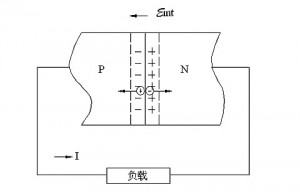LED (light-emitting diode) is a kind of one-way conductive electronic component. Generally, diode is a PN junction composed by a p-type semiconductor and an n-type semiconductor. An equilibrium condition is reached within the space charge region in the condition of zero bias.
At room temperature, why do carriers within LED PN junction generate heat along with light?
- Electrons in n-type section. Under positive bias (the normal operating condition for LED Street Light), the negative potential connected to n-type section will continuously provide electrons to PN junction. In matter of fact, most of the electrons provided by the negative potential will be “swallowed” in n-type section. 80%-90% electrons will be captured by nucleus or collide with other electrons. Once electrons were caught by other nucleus, they would lose the original speed given by external electric field. Part of them convert into heat energy, the other part is transferred to adjacent electrons as kinetic energy. Then these “new freed” electrons will repeat their predecessors’ destiny. A substantial amount of heat will be generated during the constant repetition of this process. Thus we can see that most of the energy provided by external electric field converts into heat energy of nucleus at last.
- Electrons in space charge region (PN junction). There is an internal electric field in space charge region which is opposite to external electric field. Therefore,LED Tube internal electric field will created an inverse force on electrons as opposite as external electric field dose. However, since the forward force generated by external electric field is much greater than the backward force generated by internal electric field. Electrons are still impelled in the original direction in LED PN junction. In the view of LED Products energy transmission, internal electric field creates negative work on electrons. In other words, PN junction absorbs kinetic energy from electrons and converts them into heat energy. The source of electrons’ kinetic energy is the external electric field. On the both sides of space charge region, there exists an energy level difference. Electrons need to increase their energy level as well as overcome the PN junction resistance. The energy applied to increasing the energy level is from nucleus within LED PN junction. Since energy is absorbed by electrons, the vibration amplitude of nucleus will reduce, leading to a temperature reduction. However this “cooling down” is trivial compare with the heat generated by the negative work from the internal electric field. On the whole, LED PN junction will generate a large amount of heat in their work.

